Skype: neodalle-travel
Tel: +86 135 7447 2266
E-mail: sales@visitaroundchina.com
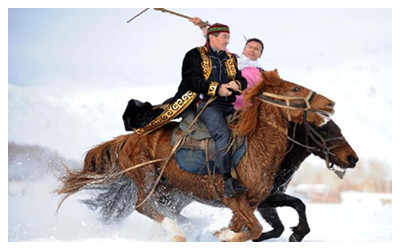
No.1: Xinjiang Ice & Snow Festival
With a wide range of winter tourism industry exhibits and exciting travel packages with unique nomadic features, Northwest China’s Xinjiang Uygur Autonomous Region vows to become another tourist destination after Harbin of Northeast China for ice and snow tourism, according to a local tourism official. Xinjiang, which has a high quality of snow and a long snowy period, has rich resources for developing winter tourism. Through more than 10 years of effort, Xinjiang’s ice and snow tourism has entered a boom season.
No.2 : Turpan Grape Festival
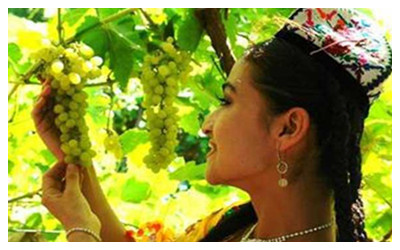 Turpan Grape Festival is one of China’s forty important festive activities that are acknowledged by the State Council, which is the only one in Xinjiang. The grape festival integrates tourism, culture, economy and trade with the theme of unity, friendship, cooperation and development, aiming at publicizing and developing Turpan and Xinjiang.During the annual Turpan Grape Festival, there are a number of interesting and exiting activities. On the festival, a large-scale firework display, and a singing and dancing gala mark the opening of the festival on the first night. Events on the festival include a Wedding in the Uygur style, mashlap (lively and humorous folk dance), nazkum (witty art performance), Koco style songs and dances, Hami-melon competition, trade negotiations, tour of the Street of Grapes and Melons.
Turpan Grape Festival is one of China’s forty important festive activities that are acknowledged by the State Council, which is the only one in Xinjiang. The grape festival integrates tourism, culture, economy and trade with the theme of unity, friendship, cooperation and development, aiming at publicizing and developing Turpan and Xinjiang.During the annual Turpan Grape Festival, there are a number of interesting and exiting activities. On the festival, a large-scale firework display, and a singing and dancing gala mark the opening of the festival on the first night. Events on the festival include a Wedding in the Uygur style, mashlap (lively and humorous folk dance), nazkum (witty art performance), Koco style songs and dances, Hami-melon competition, trade negotiations, tour of the Street of Grapes and Melons.
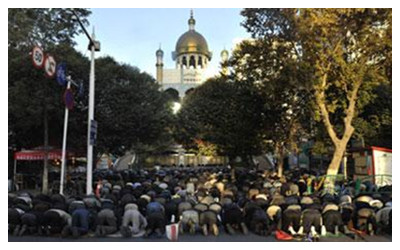 No.3: Eid al-Fitr Festival
No.3: Eid al-Fitr Festival
One of the most important Muslim festivals is Eid al-Fitr ("festival of breaking of the fast"), also called Feast of Breaking the Fast, the Sugar Feast, Bayram (Bajram), the Sweet Festival and the Lesser Eid. It is an important religious holiday celebrated by Muslims worldwide that marks the end of Ramadan, the Islamic holy month of fasting (sawm). The religious Eid is a single day and Muslims are not permitted to fast on that day. The holiday celebrates the conclusion of the 29 or 30 days of dawn-to-sunset fasting during the entire month of Ramadan.
No.4: Corban Festival
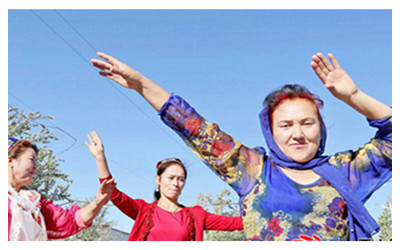 Corban Festival also known as Eid al-Adha or feast of the sacrifice, is a traditional festival celebrated by over ten ethnic minorities in China who confess Islam. It is an important annual traditional festival for Muslims, and is celebrated on Dec. 10th on the Islamic calendar, which is the beginning of Oct. on the western Gregorian calendar, when Muslims slaughter lambs to feed the hungry. This festival also has names: "Sacrifice Festival" or "Al Adha Feast". It is named with the Festival of Fast-breaking and Mawlid al-Nabi as one of the three major Islamic festivals. During the festival, people will take part in community worship to pilgrimage to Allah, and also, slay livestock and offer sacrifice to Allah, to whom they are desired to get closer.
Corban Festival also known as Eid al-Adha or feast of the sacrifice, is a traditional festival celebrated by over ten ethnic minorities in China who confess Islam. It is an important annual traditional festival for Muslims, and is celebrated on Dec. 10th on the Islamic calendar, which is the beginning of Oct. on the western Gregorian calendar, when Muslims slaughter lambs to feed the hungry. This festival also has names: "Sacrifice Festival" or "Al Adha Feast". It is named with the Festival of Fast-breaking and Mawlid al-Nabi as one of the three major Islamic festivals. During the festival, people will take part in community worship to pilgrimage to Allah, and also, slay livestock and offer sacrifice to Allah, to whom they are desired to get closer.
No.5: Nowruz Festival
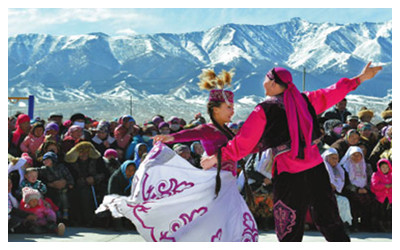 Nowruz is celebrated on the day of the astronomical Northward equinox, which usually occurs on March 21 or the previous or following day depending on where it is observed. This festival originated in ancient Persia and is also celebrated in Afghanistan, Azerbaijan, the Kurdish areas in the Middle East, and other countries in Central and South Asia. Nowruz Festival is celebrated as the traditional New Year for Uyghurs, Kazaks, Kirgiz, and Uzbeks in China’s Xinjiang region. It is celebrated around March 21st,in the first day on the Iranian calendar and the first day of spring. At the time of the equinox, the sun is observed to be directly over the equator, and the north and south poles of the Earth lie along the solar terminator; sunlight is evenly divided between the north and south hemispheres.
Nowruz is celebrated on the day of the astronomical Northward equinox, which usually occurs on March 21 or the previous or following day depending on where it is observed. This festival originated in ancient Persia and is also celebrated in Afghanistan, Azerbaijan, the Kurdish areas in the Middle East, and other countries in Central and South Asia. Nowruz Festival is celebrated as the traditional New Year for Uyghurs, Kazaks, Kirgiz, and Uzbeks in China’s Xinjiang region. It is celebrated around March 21st,in the first day on the Iranian calendar and the first day of spring. At the time of the equinox, the sun is observed to be directly over the equator, and the north and south poles of the Earth lie along the solar terminator; sunlight is evenly divided between the north and south hemispheres.
No.6: Nadam Festival in Xinjiang
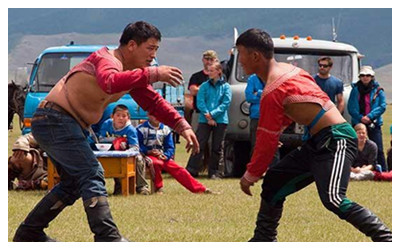 Nadam festival is a folk sport festival of the Mongolian ethnic group. It happens during July and August and is a 10 day traditional festival, where “nadam” means amusement and entertainment” The festival is celebrated in Bayanbulak prairie in the Mongolian Autonomous Prefecture of Bayingolin, northwest China’s Xinjiang region. “Nadam” means "the three games of men": wrestling, horse racing and archery. The games are Mongolian and are held throughout the country during midsummer. Women have started participating in the archery and girls in the horse-racing games, but not in Mongolian wrestling.
Nadam festival is a folk sport festival of the Mongolian ethnic group. It happens during July and August and is a 10 day traditional festival, where “nadam” means amusement and entertainment” The festival is celebrated in Bayanbulak prairie in the Mongolian Autonomous Prefecture of Bayingolin, northwest China’s Xinjiang region. “Nadam” means "the three games of men": wrestling, horse racing and archery. The games are Mongolian and are held throughout the country during midsummer. Women have started participating in the archery and girls in the horse-racing games, but not in Mongolian wrestling.
 Ask Questions ?
Ask Questions ?